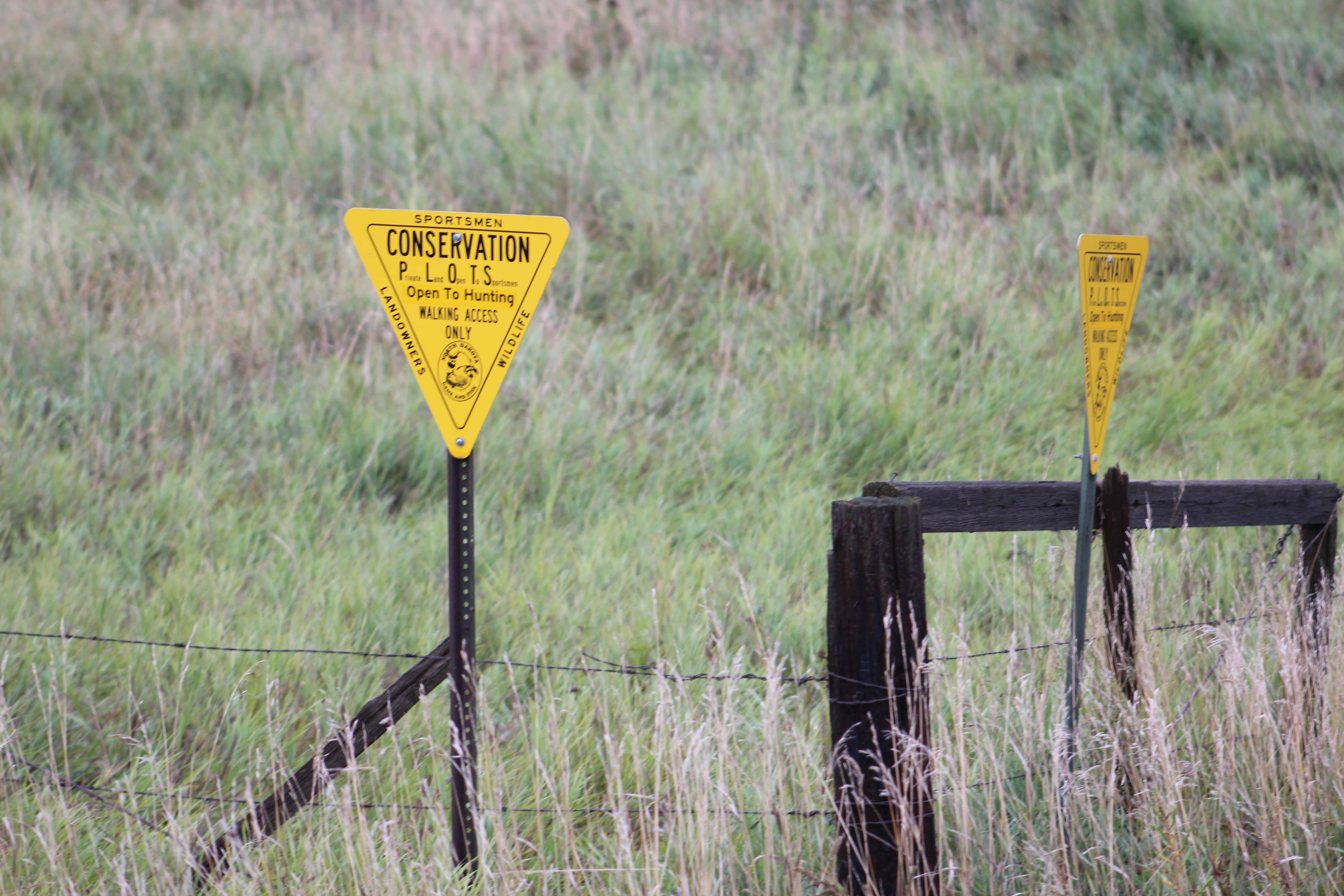
PLOTS acres remain a major part of the public-access hunting system in North Dakota and sustain the state’s hunting heritage. This year, approximately 800,000 acres, generally of good, huntable habitat, remain enrolled in PLOTS despite significant losses of conservation acres throughout the state. Simonson Photo.
By Nick Simonson
The North Dakota Private Land Open to Sportsmen (PLOTS) program enters its 25th year with approximately 800,000 acres open to hunters living in and venturing to the state for varied hunting opportunities. At no other time of year are these acres more utilized by resident hunters than this weekend’s pheasant opener on Sat. Oct. 8. Rightfully so, as for the next week, from that Saturday start until the end of the following Friday, state law limits the use of the parcels bounded by yellow triangles to resident hunters only. However, the program is one in a constant state of flux, with new parcels being added and other contracts for hunter access expiring all in light of diminishing conservation acres on the landscape, according to Private Lands Section Leader Kevin Kading with the North Dakota Game & Fish Department (NDG&F).
“While we didn’t really gain a lot of new acres, one thing that we did was we re-enrolled and renewed a lot of those agreements to maintain those acres for another term. Sometimes that’s just the way the year is. It was kind of flat as far as interest and we might have gained acres, but we also had some acres that expired, and landowners chose not to renew them. In some areas of the state hunters are going to find some new PLOTS, and in other parts of the state they might find that nothing has changed. So generally speaking, we’re sitting about that 800,000 mark for the fall of 2022,” Kading details of the enrollment of lands in the winter, spring and summer leading up to this hunting season.
Continuing the trend of focusing on quality over quantity, Kading and his team have continued to seek out and review more possible PLOTS areas that have a solid habitat component associated with them, providing hunters not only with the access they need to pursue game, but also with the other side of the equation and that’s the ability to explore and hunt the habitat that holds upland birds, waterfowl and deer. While some stubble fields and hayed areas are in the program, those parcels are often adjacent or near to areas which attract waterfowl and provide good field hunting for ducks and geese in the fall.
“In 2019 we planted 4,900 acres of new grass, the following year was 3,000 acres and then 1,500 acres, so over the last three or four years, that’s over 10,000 acres of new habitat planted and those are going to be on the landscape for 10 or 15 years,” Kading details of NDG&F private land programs working in connection with PLOTS, adding that habitat of many types in addition to size factor in when considering a parcel, “we look at a lot of different things, a lot of those habitat components, whether it’s going to provide some good nesting cover, some brooding cover, fawning cover, winter cover and also, obviously the hunting cover,” he concludes.
Down from a height of 1.1 million acres in the early 2000s, the decline in number of acres in the PLOTS program has loosely correlated with the number of acres across the state enrolled in state and federal conservation programs such as the conservation reserve program (CRP). Working with private lands biologists throughout the eight district offices of the NDG&F, Kading and the department have been able to limit that correlation, keeping PLOTS acres steady as more and more acres come out of marginal land protection programs and are turned over to row cropping efforts.
“We continue to push for those quality acres, but there’s been this slow and steady decline of land enrolled in CRP that was also enrolled in PLOTS, and so that’s where we start to see those losses, and it’s hard to make up for those losses. Just to put it in perspective, 370,000 acres of CRP expired just a week ago at the end of September, at the end of the federal fiscal year. There was only 76,000 acres of that accepted back through the general sign up. That continued downward trend of CRP has not been good for a lot of things in our state,” Kading suggests of the limited pool of habitat the PLOTS program now has to draw from.
PLOTS guides are available in printed format at many sporting goods stores throughout North Dakota, and can be viewed online at gf.nd.gov/plots/guide. Additionally, digital versions are available for use on smartphones while in the field. For more information on enrolling lands, or to talk to a Private Lands section biologist, call 701-328-6300 and request Private Lands, or reach out to a local NDG&F district office.
